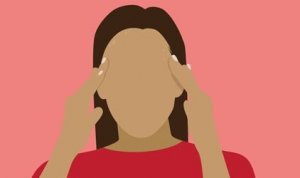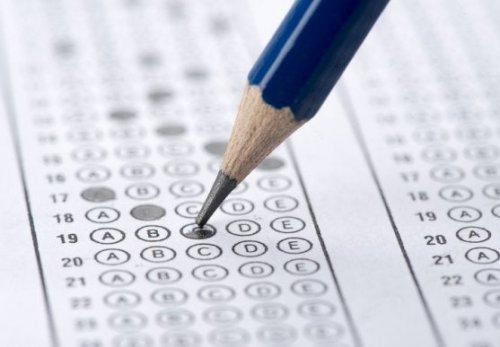The Hamilton Anxiety Rating Scale


Written and verified by the psychologist Valeria Sabater
The Hamilton Anxiety Rating Scale is one of the most commonly used psychological questionnaires to clarify the degree of anxiety a person suffers from. Therefore, it isn’t a diagnostic instrument but a useful and highly effective resource for assessing the state of a patient, their psychosomatic symptoms, fears, and cognitive processes.
This scale, designed in 1959 by Max R. Hamilton, a Professor of Psychiatry and later president of the British Psychological Society, is still one of the most commonly used. He believed that not everyone experiences anxiety the same way.
He wasn’t really trying to come up with another instrument for diagnosing a disorder but a highly rigorous resource with which to assess the degree of anxiety in a person. Also, one with which he could differentiate psychic anxiety from somatic anxiety due to its importance in defining the capacity of control that people have over this overly exhausting reality.
Later, in 1969, Dr. Hamilton wanted to delve a little deeper and improve the scale. Thus, he made a distinction between somatic muscle signs and somatic sensory signs from among those items focused on assessing somatic anxiety. Thus, with such a degree of refinement when designing a test as tightly as possible, you can probably intuit the obvious clue in this regard.
Each person experiences anxiety differently. Thus, no two realities are identical. This means that not everyone can use the same therapeutic strategies. Tests such as The Hamilton Anxiety Rating Scale are mainly suitable to maximize treatment based on the particular needs of a patient.

Purpose of the Hamilton Anxiety Rating Scale
The Hamilton Anxiety Rating Scale is a clinical assessment instrument for measuring a person’s degree of anxiety. It’s useful in both children and adults. Also, it’s an instrument both doctors and psychiatrists can use. But remember that it doesn’t determine the diagnosis of a specific disorder (although it can help all the same).
There’s also a problem that health professionals are already perceiving with this clinical resource. The Hamilton Anxiety Rating Scale is easy to access and anyone can download it or even take the test online. Thus, it’s common for people to consult their doctors claiming they suffer from severe anxiety.
You must know this kind of self-diagnosis isn’t accurate. This is because this type of test, like any other form of clinical evaluation, must be applied by a specialized professional. Moreover, the Hamilton Anxiety Rating Scale has an item where the researcher must assess the state in which a patient performed the test.
Therefore, it’s a rigorous priority in this regard because the interview itself during the test is one of the main keys to a good diagnosis. At least according to studies such as the ones conducted by psychiatrists Katherine Shear and Joni Vander Bilt on the Hamilton Anxiety Rating Scale.
“Smile, breathe, and go slowly.”
-Thich Nhat Hanh-

Items measured
This test consists of 14 items and each question has five answer options — ranging from not present to very severe. Thus, a score of 17 or less indicates mild anxiety. Furthermore, a score between 18 and 24 points hints to moderate anxiety. Finally, a score between 24 and 30 means a person is experiencing a severe degree of anxiety.
14 items make up the test:
- Anxious mood: Worries, anticipation of the worst, fearful anticipation, irritability.
- Tension: Feelings of tension, fatigability, startle response, moved to tears easily, trembling, feelings of restlessness, inability to relax.
- Fears: Of the dark, of strangers, of being left alone, of animals, of traffic, of crowds.
- Insomnia: Difficulty in falling asleep, broken sleep, unsatisfying sleep and fatigue on waking, dreams, nightmares, night terrors.
- Intellectual: Difficulty in concentration, poor memory.
- Depressed mood: Loss of interest, lack of pleasure in hobbies, depression, early waking, diurnal swing.
- Somatic (muscular): Pains and aches, twitching, stiffness, myoclonic jerks, grinding of teeth, unsteady voice, increased muscular tone.
- Somatic (sensory): Tinnitus, blurring of vision, hot and cold flushes, feelings of weakness, pricking sensation.
- Cardiovascular symptoms: Tachycardia, palpitations, pain in chest, throbbing of vessels, fainting feelings, missing beat.
- Respiratory symptoms: Pressure or constriction in the chest, choking feelings, sighing, dyspnea.
- Gastrointestinal symptoms: Difficulty in swallowing, wind abdominal pain, burning sensations, abdominal fullness, nausea, vomiting, borborygmi, looseness of bowels, loss of weight, constipation.
- Genitourinary symptoms: Frequency of micturition, urgency of micturition, amenorrhea, menorrhagia, development of frigidity, premature ejaculation, loss of libido, impotence.
- Autonomic symptoms: Dry mouth, flushing, pallor, tendency to sweat, giddiness, tension headache, raising of hair.
- Behavior at interview: Fidgeting, restlessness or pacing, tremors of hands, furrowed brow, strained face, sighing or rapid respiration, facial pallor, swallowing, etc.

Conclusion
The essential aspect that must be emphasized is that the Hamilton Anxiety Rating Scale is a freely available resource so you can use it at your convenience. However, only a psychiatrist or a psychologist is truly qualified to make assessments and diagnoses.
Based on the results, the professional will propose some kind of strategy. Dr. Hamilton’s purpose back in the ’60s was to be able to obtain an accurate and reliable profile regarding the level of anxiety of each person. Only then will an anxious person be well-adjusted and act in their best interest.
Finally, the questions aren’t the key to proper evaluation. Instead, what’s important is the assessment of the patient’s tone of voice, posture, and understanding — or lack thereof.
The Hamilton Anxiety Rating Scale is one of the most commonly used psychological questionnaires to clarify the degree of anxiety a person suffers from. Therefore, it isn’t a diagnostic instrument but a useful and highly effective resource for assessing the state of a patient, their psychosomatic symptoms, fears, and cognitive processes.
This scale, designed in 1959 by Max R. Hamilton, a Professor of Psychiatry and later president of the British Psychological Society, is still one of the most commonly used. He believed that not everyone experiences anxiety the same way.
He wasn’t really trying to come up with another instrument for diagnosing a disorder but a highly rigorous resource with which to assess the degree of anxiety in a person. Also, one with which he could differentiate psychic anxiety from somatic anxiety due to its importance in defining the capacity of control that people have over this overly exhausting reality.
Later, in 1969, Dr. Hamilton wanted to delve a little deeper and improve the scale. Thus, he made a distinction between somatic muscle signs and somatic sensory signs from among those items focused on assessing somatic anxiety. Thus, with such a degree of refinement when designing a test as tightly as possible, you can probably intuit the obvious clue in this regard.
Each person experiences anxiety differently. Thus, no two realities are identical. This means that not everyone can use the same therapeutic strategies. Tests such as The Hamilton Anxiety Rating Scale are mainly suitable to maximize treatment based on the particular needs of a patient.

Purpose of the Hamilton Anxiety Rating Scale
The Hamilton Anxiety Rating Scale is a clinical assessment instrument for measuring a person’s degree of anxiety. It’s useful in both children and adults. Also, it’s an instrument both doctors and psychiatrists can use. But remember that it doesn’t determine the diagnosis of a specific disorder (although it can help all the same).
There’s also a problem that health professionals are already perceiving with this clinical resource. The Hamilton Anxiety Rating Scale is easy to access and anyone can download it or even take the test online. Thus, it’s common for people to consult their doctors claiming they suffer from severe anxiety.
You must know this kind of self-diagnosis isn’t accurate. This is because this type of test, like any other form of clinical evaluation, must be applied by a specialized professional. Moreover, the Hamilton Anxiety Rating Scale has an item where the researcher must assess the state in which a patient performed the test.
Therefore, it’s a rigorous priority in this regard because the interview itself during the test is one of the main keys to a good diagnosis. At least according to studies such as the ones conducted by psychiatrists Katherine Shear and Joni Vander Bilt on the Hamilton Anxiety Rating Scale.
“Smile, breathe, and go slowly.”
-Thich Nhat Hanh-

Items measured
This test consists of 14 items and each question has five answer options — ranging from not present to very severe. Thus, a score of 17 or less indicates mild anxiety. Furthermore, a score between 18 and 24 points hints to moderate anxiety. Finally, a score between 24 and 30 means a person is experiencing a severe degree of anxiety.
14 items make up the test:
- Anxious mood: Worries, anticipation of the worst, fearful anticipation, irritability.
- Tension: Feelings of tension, fatigability, startle response, moved to tears easily, trembling, feelings of restlessness, inability to relax.
- Fears: Of the dark, of strangers, of being left alone, of animals, of traffic, of crowds.
- Insomnia: Difficulty in falling asleep, broken sleep, unsatisfying sleep and fatigue on waking, dreams, nightmares, night terrors.
- Intellectual: Difficulty in concentration, poor memory.
- Depressed mood: Loss of interest, lack of pleasure in hobbies, depression, early waking, diurnal swing.
- Somatic (muscular): Pains and aches, twitching, stiffness, myoclonic jerks, grinding of teeth, unsteady voice, increased muscular tone.
- Somatic (sensory): Tinnitus, blurring of vision, hot and cold flushes, feelings of weakness, pricking sensation.
- Cardiovascular symptoms: Tachycardia, palpitations, pain in chest, throbbing of vessels, fainting feelings, missing beat.
- Respiratory symptoms: Pressure or constriction in the chest, choking feelings, sighing, dyspnea.
- Gastrointestinal symptoms: Difficulty in swallowing, wind abdominal pain, burning sensations, abdominal fullness, nausea, vomiting, borborygmi, looseness of bowels, loss of weight, constipation.
- Genitourinary symptoms: Frequency of micturition, urgency of micturition, amenorrhea, menorrhagia, development of frigidity, premature ejaculation, loss of libido, impotence.
- Autonomic symptoms: Dry mouth, flushing, pallor, tendency to sweat, giddiness, tension headache, raising of hair.
- Behavior at interview: Fidgeting, restlessness or pacing, tremors of hands, furrowed brow, strained face, sighing or rapid respiration, facial pallor, swallowing, etc.

Conclusion
The essential aspect that must be emphasized is that the Hamilton Anxiety Rating Scale is a freely available resource so you can use it at your convenience. However, only a psychiatrist or a psychologist is truly qualified to make assessments and diagnoses.
Based on the results, the professional will propose some kind of strategy. Dr. Hamilton’s purpose back in the ’60s was to be able to obtain an accurate and reliable profile regarding the level of anxiety of each person. Only then will an anxious person be well-adjusted and act in their best interest.
Finally, the questions aren’t the key to proper evaluation. Instead, what’s important is the assessment of the patient’s tone of voice, posture, and understanding — or lack thereof.
All cited sources were thoroughly reviewed by our team to ensure their quality, reliability, currency, and validity. The bibliography of this article was considered reliable and of academic or scientific accuracy.
- Hamilton M. (1969) Diagnosis and rating of anxiety. In Studies of Anxiety, Lander, MH. Brit J Psychiat Spec Pub ; 3:76-79.
- Hamilton, M. (1959). Escala de Clasificación de Ansiedad de Hamilton (HAM-A). Br Journal of Medicine Psychol, 32, 50-55. https://doi.org/10.1145/363332.363339
- Conde V, Franch JL. (1984)Escalas de evaluación comportamental para la cuantificación de la sintomatología psicopatológica en los trastornos angustiosos y depresivos. Madrid. Laboratorios Upjohn.
- Bech P. (2004) Rating Scales for Psychopathology, Health Status and Quality of Life. Ed Springer-Verlag Berlin Heidelberg. New York
- American Psychiatric Association. Handbook of Psychiatric Measures. Washington, 2000.
This text is provided for informational purposes only and does not replace consultation with a professional. If in doubt, consult your specialist.







